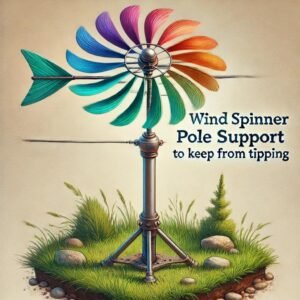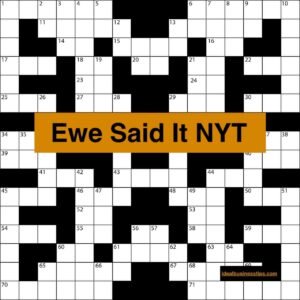EFP Bomb A unique kind of shaped charge called an explosively formed penetrator (EFP bomb). Often referred to as an explosively formed projectile. A self-forging warhead, or a self-forging fragment, is created to successfully pierce armour. The explosive charge has the effect of deforming a metal plate into a slug or rod shape and accelerating it towards a target. As the name implies. They were initially created by American oil firms as oil well perforators in the 1930s. And they were used as weapons in World War II.
The Emergence of an EFP Bomb
The MPB mine’s penetrator, which is produced explosively, is visible.
A typical conventional-shaped charge contains a conical metal liner. That an explosive explosion forces into a hypervelocity jet of superplastic metal that can destroy vehicles and pierce strong steel armour. This configuration has the drawback of the metal jet losing power as it moves because it fragments into dispersed particles that wander out of alignment.
Compared to a normal shaped charge, an EFP’s penetration is more significantly influenced by the density of its lining metal. Tantalum, which weighs 16.654 g/cm3, is preferred in delivery systems with size restrictions. Such as the SADARM, which is fired by a howitzer. Other weapon systems that do not have realistic restrictions on warhead diameter can utilise a less costly copper liner (8.960 g/cm3). That is twice as large in diameter.
The same idea underlies how an EFP works. But its liner is made to make a unique projectile that will keep its shape and be able to pierce armour from a farther distance. Depending on the design of the plate and the manner in which the explosive is set off. The dish-shaped liner of an EFP can produce a variety of unique projectile shapes.
An EFP with a tantalum liner can often pierce steel armour with a thickness equal to its diameter. Or with a copper liner, half that thickness. In comparison, a standard shaped charge, depending on its design and liner material. Can pierce armour up to six times its diameter in thickness.
development of an EFP.
The MPB mine’s explosively created penetrator is visible EFP Bomb.
A typical conventional shaped charge contains a conical metal liner that is compressed by an explosive blast into a superplastic metal jet that travels at high speeds and may destroy vehicles and thick steel armour. A drawback of this setup is that the metal jet loses efficiency as it travels because it fragments into random. Drifting pieces.
Use in Homemade Explosives
In Iraq, an improvised explosive device. The concave copper shape on top transforms into an explosively produced penetrator when it is activated.
EFP Bomb have been used in improvised explosive devices against armoured cars. Such as when Hezbollah employed them in the 1990s and. When the Red Army Faction was blamed for the 1989 murder of German financier Alfred Herrhausen. Their frequent employment in IEDs by militants in Iraq against coalition vehicles is a recent phenomenon.
The charges are typically cylindrical and made of readily accessible metal tubing. To make a shaped charge, the forward end is closed with a concave disk-shaped liner made of copper or steel. To fill the pipe. Explosive is loaded beneath the metal liner. The explosive launches the liner into the air to create a projectile when it explodes.
The impacts of conventional explosives. Such as blast forces and metal shards, infrequently render armoured vehicles inoperable. But the explosively created solid copper penetrator is extremely fatal. Even to the most recent generation of mine-resistant vehicles and many tanks.
These are frequently put along roadsides at congested areas where traffic must slow down. Such as intersections and junctions, mounted on crash barriers at window level. Because the vehicle is going more slowly. The operator has more time to decide when to fire.
Explosively Generated Penetrators That are Non-Circular
Based on changes to the liner construction, non-circular explosively generated penetrators can be created. For example, the designs of U.S. Patents 6606951[16] and 4649828[17] are not circular. Several asymmetric explosively forged penetrators can be launched horizontally and in 360 degrees using US6606951B1. The several clothespin-shaped EFPs formed by US4649828A increase the hit probability.
Moreover, a rectangular liner can be used to create a simplified EFP Bomb (SIM-EFP). which is akin to a linear-shaped charge or modified platter charge.
It is possible to further alter this design to resemble. US4649828A by using many cut and bent steel bars lined up side by side as opposed to a single liner.
Similar devices manufactured by dissenting Republican factions in Northern Ireland and intended for use against the police. The weapon was first used in Northern Ireland in March 2014 when a PSNI Land Rover was attacked while driving down the Falls Road in west Belfast. On November 18, 2022, in Strabane, County Tyrone, an EPF detonated by a command wire destroyed a police car.
https://www.youtube.com/watch?v=D3_F4BXI9YU
The horrifying, sophisticated IEDs that plagued US forces in Iraq are Soleimani’s legacy.
Except from entry and exit holes rimmed with molten copper that had long cooled, the armoured vehicle was largely intact when Brian Castner combed over it.
That summer of 2006, the US soldiers who had been inside were medevaced close to Kirkuk, leaving the Air Force bomb technician alone with the car. Around what one soldier had left behind, pools of blood boiled in the Iraqi sun.
Castner reported that one foot was still inside the Humvee.
Tensions between Iran and the United States have risen following Maj. Gen. Qasem Soleimani’s targeted killing by the United States early on Friday.
But it also brought back attention to Soleimani’s record in Iraq, where he oversaw the employment of advanced weaponry and tactics that threatened US forces for years, leaving a trail of dead and injured soldiers in their wake.
Castner told The Washington Post on Friday that the vehicle he had been inspecting had been obliterated by an explosively formed penetrator (EFP Bomb), a weapon of Iranian engineering that had been strewn across battlefields wherever Iranian-backed Shiite militias and fighters had congregated, including Kirkuk and Baghdad’s Sadr City.
Similar to classic IEDs
Similar to classic IEDs but considerably deadlier and more effective, Castner claimed the little but mighty weapons are used against armoured vehicles. Yet, they are also harder to make and more complicated.
The weapon, which resembles a coffee can but is slightly smaller and has a slightly concave end, is filled with plastic explosives that melt copper plates into molten slugs that can pierce several inches of armour, send elongated shards crashing through people and vehicles, and create entry and exit holes that resemble gunshot wounds.
Because of their lethal effectiveness, Castner described them as “very awful” and the most feared explosive device he had ever come across.






